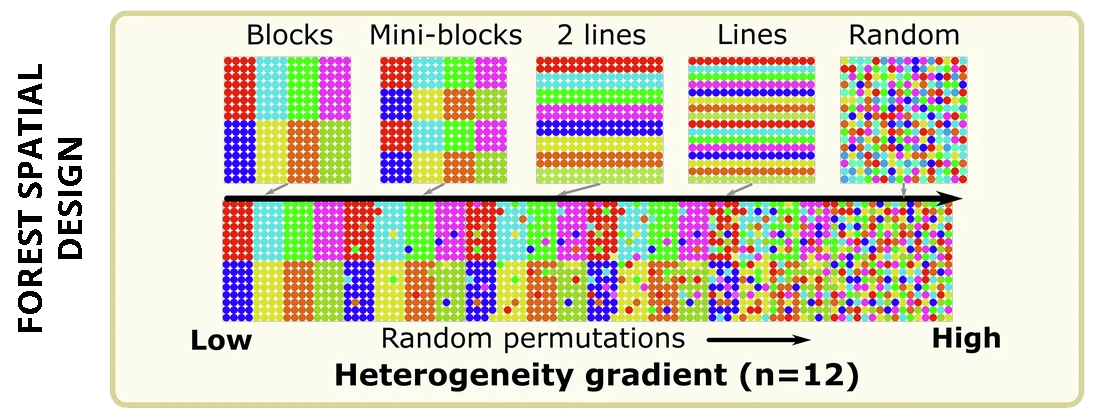A study conducted by researchers at the Center for Functional and Evolutionary Ecology (CEFE) in France has shown that the spatial distribution of different tree species in mixed forests plays a key role in optimizing functions such as forest productivity, carbon storage, and nutrient recycling. These effects are reinforced by the number of species present, highlighting the importance of spatial distribution and tree diversity in optimizing the ecological benefits of reforestation programs.
In this context, mixed planting is recommended. However, the techniques used, particularly the spatial distribution of species, remain largely unexplored and often face management constraints in the field. To address this issue, different planting scenarios were implemented as part of this study: grouping by species, random distribution, and row planting.
The results show that greater spatial heterogeneity of species leads to increased forest biomass production. There are many explanations for this: a more homogeneous distribution of litter, an increase in its decomposition, and an improvement in the associated nitrogen and carbon cycles. These effects are reinforced by an increase in species richness, ranging from 2 to 8 species.
In conclusion, appropriate spatial arrangement of trees is an effective and relatively simple solution for maximizing the positive effect of biodiversity on ecosystems functioning.


